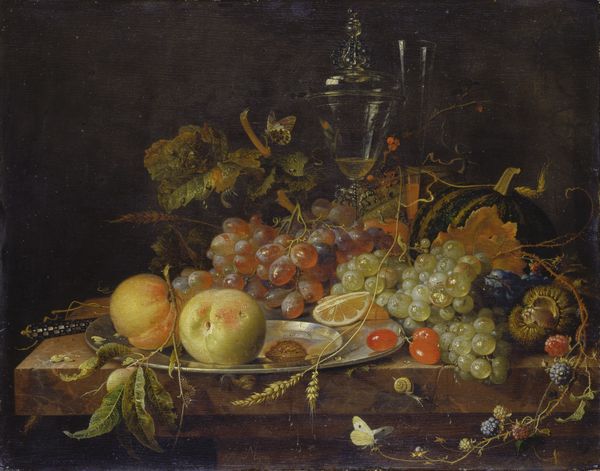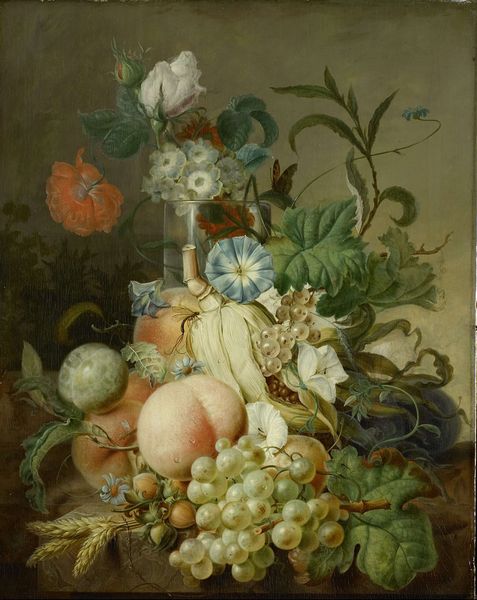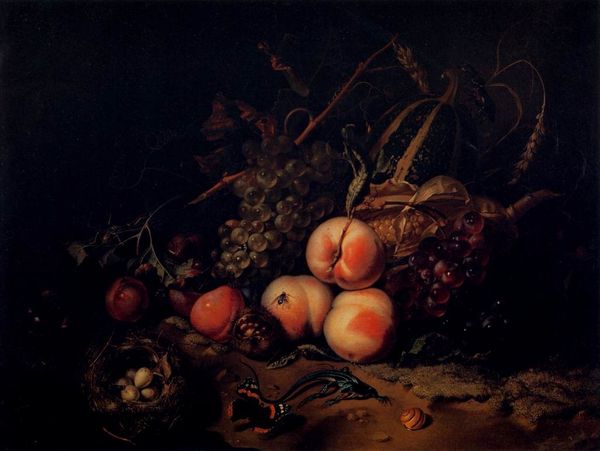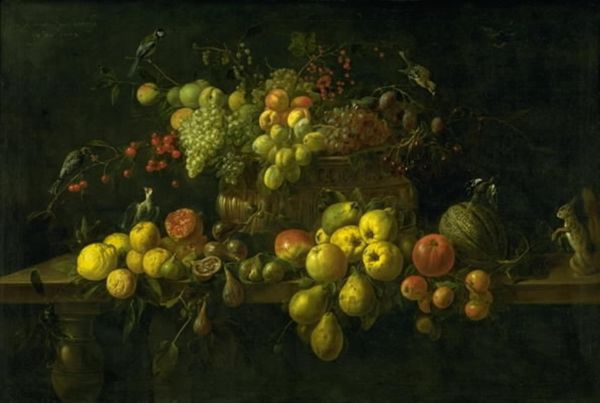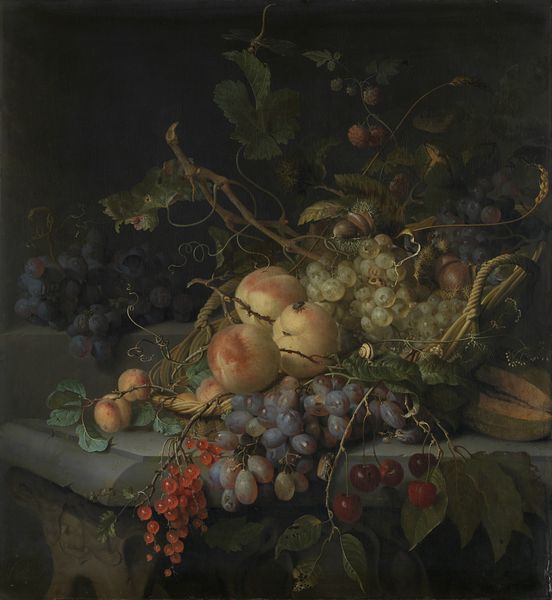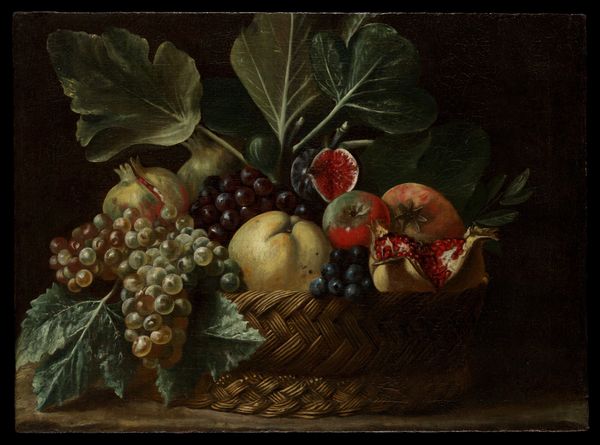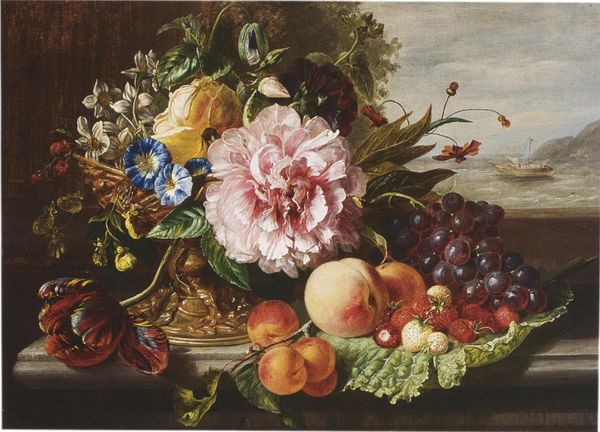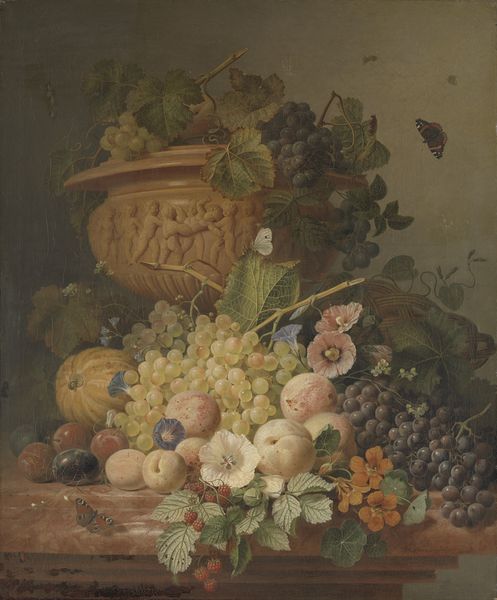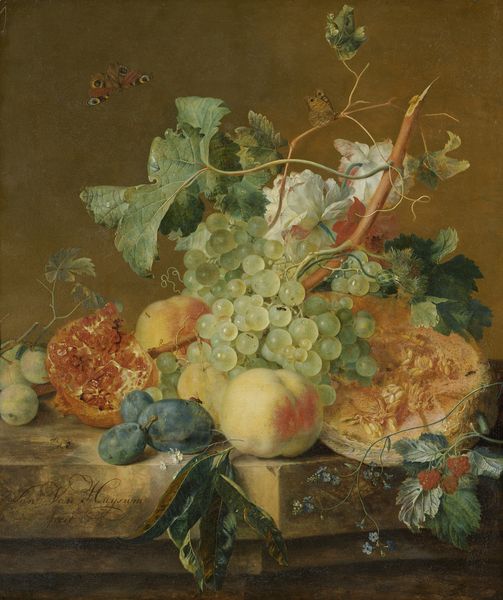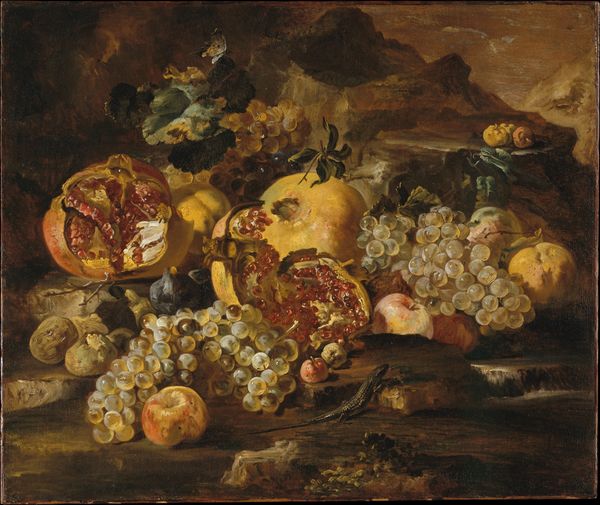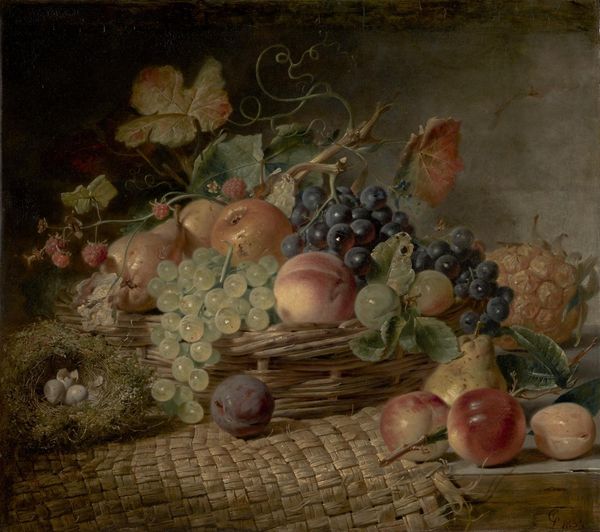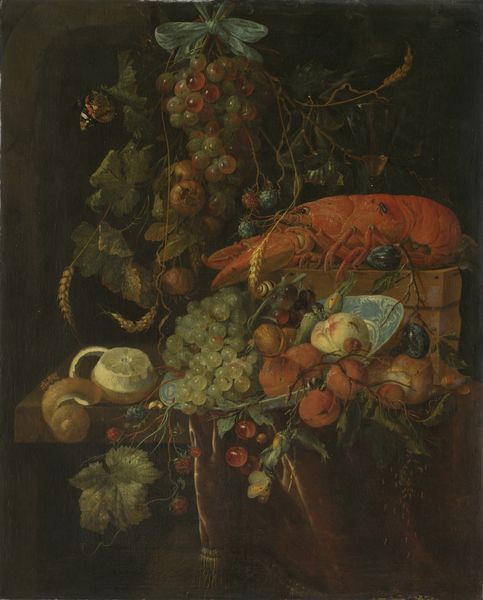
oil-paint, canvas
#
baroque
#
oil-paint
#
oil painting
#
canvas
#
realism
Dimensions: 53.5 cm (height) x 63 cm (width) (Netto), 63.9 cm (height) x 73 cm (width) x 4.5 cm (depth) (Brutto)
Editor: Here we have Jan Davidsz de Heem's "Still Life with Asparagus" from around 1651 to 1655, painted with oils on canvas. I’m immediately struck by the contrast between the darkness of the background and the vibrant fruits and vegetables. It feels both opulent and a little…decaying. What do you see in this piece, and how do you interpret the message behind this type of still life? Curator: That sense of opulence and decay is crucial. Seventeenth-century still lifes, especially in the Dutch Golden Age, weren’t just pretty pictures of food. Think of them as coded messages reflecting a society grappling with emerging wealth and global trade. The asparagus itself, often imported and considered a luxury, speaks to the colonial context and global exchange networks of the time, what were the labour conditions? Who could afford to consume this art and food, and who produced it? Editor: So, it's not just about beauty, but also about… inequality? The painting looks almost political now! Curator: Exactly. The "decay" you noticed could represent the fleeting nature of earthly pleasures and the ethical questions arising with rapid economic expansion. Do you notice anything about the grapes or other fruits that give clues? Editor: The grapes look like they’re starting to go bad! And aren’t still lifes like this usually called ‘vanitas’ paintings? It seems like they are trying to suggest we reflect on life. Curator: Precisely! But what does reflecting on life entail? It's not simply about memento mori; instead, look closely at whose life, whose privilege, is being centered. This vanitas can be a celebration of personal and social progress—rooted in power, gender, and capital. It prompts a critical interrogation of these symbols of success. Editor: That makes me look at it totally differently! Thanks. Curator: It's amazing how art history becomes more poignant once linked with our own lived realities.
Comments
No comments
Be the first to comment and join the conversation on the ultimate creative platform.
